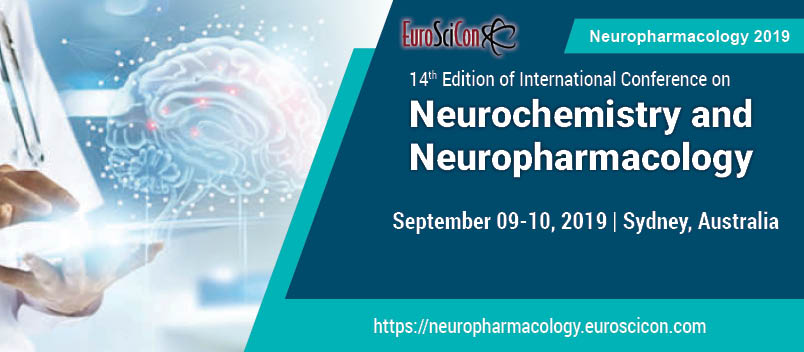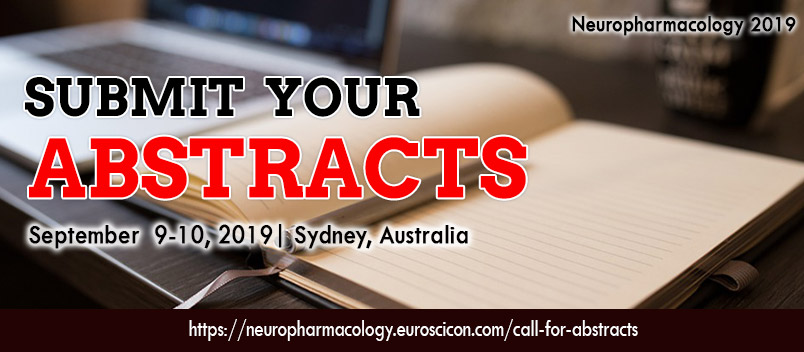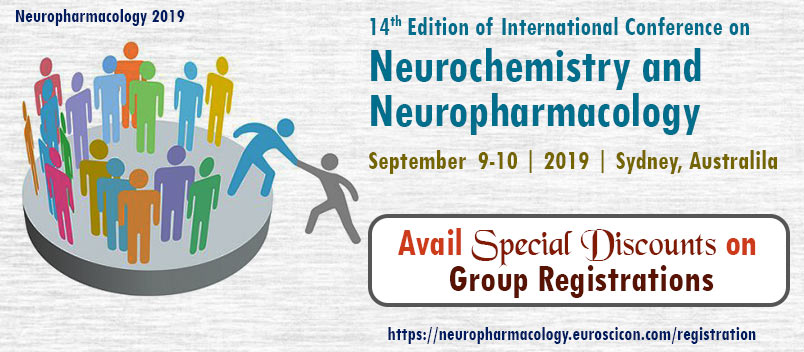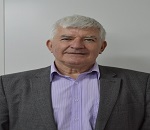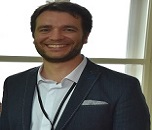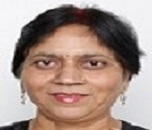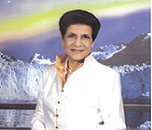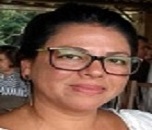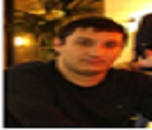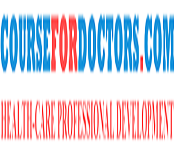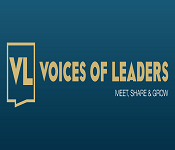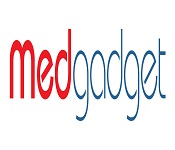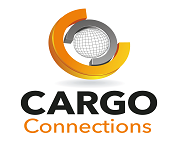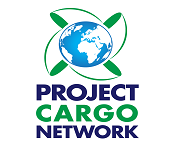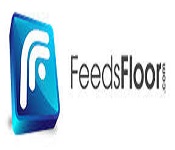Neuropharmacology 2019
About Conference
EuroSciCon is inviting all of you to come to our Neurochemistry and Neuropharmacology Conference 2019 September 09-10, Sydney | Australia. This is of extraordinary chance to take part in international conference. We welcome Researchers, Pharmacologists, Neurochemists, Academics, Industrialists and Chemistry and Pharmacology Associations and societies to give the world a prime reaction for the issue. The get-together will be a stage to globalize one research, to share true blue encounters, to get learning on new progressions and headings. The meeting will be a stage to globalize one research, to share logical encounters, to pick up learning on new innovations and directions. The meeting is booked for September 09-10, 2019 in Sydney, Australia. We welcome patrons and exhibitor to grandstand your items to our members and influence it to achieve the general population through them. We ask for you to make utilization of this chance to improve the world a place to live in.
Neurochemistry and Neuropharmacology 2019 includes international attendee workshops, lectures, and symposia, including a designated registration area, a refreshment break, and gala lunch. Neurochemists and Neuropharmacologists can join the EuroSciCon as an international member to receive discounts on registration. So come and join leading experts and allied professionals from September 09-10, 2019 in Sydney, Australia to keep up with the rapidly accelerating pace of change that is already having an impact on the field of neurochemistry and neuropharmacology.
At 2019 Neuropharmacology Conference you can meet the universities driving neurochemists, neuropharmacologists, consistent researchers what's progressively the business mammoths who will give you the latest changes, degrees of progress and true blue approaches in this way help you in expanding your wine horizons.
The inspirations driving Neuropharmacology Meeting will truly reflect the present cases, advancing drives, new rationalities and future cases in Neuropharmacology and Neurochemistry. The 2019 Neuropharmacology Summit will cover among others cardiovascular pharmacology, Neuroinflammation, Psychopharmacology and many other research works to wrap things up, a wide level of neurochemistry and neuropharmacology in different fields.
Meet the global inspiring experts and Speakers at our Neuropharmacology 2019 to talk about on new advances in the field of neurochemistry and neuropharmacology to improve health and treatment and additional innovations. Neuropharmacology 2019 not just make a phase to exchange estimations to the enormous social occasion of individuals, yet also endeavor to spread concentrated and research advances in the Clinical, definite and physiological parts of medicinal and designing. It happens to be more feasible for everyone to put in the photograph with novel research and to perceive the degree and noteworthiness of specific research runs in the field of Neuropharmacology and Neurochemistry.
In this way, our objective is, to make stages which will accumulate surely understood specialists who will no uncertainty on the planet update our social event in the midst of the Q&A sessions.
Target Audiences:
• Pharmacists
• Pharmacologists
• Neurochemists
• Business Entrepreneurs
• Pharmaceutical companies.
• Supply Chain companies
• Manufacturing Companies
• Pharmaceutical Industrial Giants.
• Students of Pharmacy
• Student of Chemistry and Pharmacology
• Pharmacology and Chemistry Societies and the people Associated.
• Nobel laureates in Health Care and Medicine
• Pathology Professionals
• Clinical Laboratories and Technicians
• Research Institutes and members.
• Training Institutes.
• Nursing Professionals
Sydney, the capital of New South Wales, Australia. It is Australia's most established and biggest city with a population of around 4 million. Sydney is worked around an immense harbor and has numerous vacation destinations and additionally various shorelines, sounds and two or three national parks.
Despite being one of the most expensive cities in the world, the 2018 Mercer Quality of Living Survey ranks Sydney tenth in the world in terms of quality of living, making it one of the most livable cities. It is classified as an Alpha World City by Globalization and World Cities Research Network, indicating its influence in the region and throughout the world. Ranked eleventh in the world for economic opportunity, Sydney has an advanced market economy with strengths in finance, manufacturing and tourism. There is a significant concentration of foreign banks and multinational corporations in Sydney and the city is promoted as one of Asia Pacific's leading financial hubs. Established in 1850, the University of Sydney is Australia's first university and is regarded as one of the world's leading universities. Sydney is also home to the oldest library in Australia, State Library of New South Wales, opened in 1826
Attractions in Sydney:
- Blue Mountains
- Chinese Garden of Friendship
- Hunter Valley Gardens
- Lord Howe Island Marine Park
- Luna Park
- Opera House
- Sea Life Sydney Aquarium
- Wild Life Sydney Zoo
- Darling Harbour
- The Royal Botanic Garden
Sessions/Tracks
Track 1: Neuropharmacology
Neuropharmacology is the study how it influence cell work in the sensory system, and the neural instruments through which they impact conduct. There are two principle parts of neuropharmacology Molecular and Behavioral. Sub-atomic neuropharmacology includes the investigation of neurons and their neurochemical communications, with the general objective of creating drugs that effectively affect neurological capacity. Conduct neuropharmacology centers around the investigation of how sedates influence human conduct (neuropsychopharmacology), including the investigation of how medicate reliance and enslavement influence the human cerebrum. Scientists are creating medications to treat a wide range of neurological issue, including neurodegenerative diseases, for example, Parkinson's malady and Alzheimer's illness, mental clutters, fixation, and numerous others. Both of these fields are firmly associated, since both are concerned about the coordination of synapses, neuropeptides, neurohormones, neuromodulators, catalysts, second emissaries, co-transporters, particle channels, and receptor proteins in the focal and fringe sensory systems.
Track 2: Cardiovascular Pharmacology
Pharmacology is the part of science about the investigation of Drug activity, where a medication can be comprehensively characterized as any man-made, normal, or endogenous (from inside the body) atom which applies a biochemical or physiological impact on the cell, tissue, organ, or life form. Cardiovascular pharmacology is the investigation of the impacts of medications on the whole cardiovascular system, including the heart and veins. All the more particularly, it is the investigation of the cooperations that happen between a living life form and synthetic substances that influence typical or strange biochemical capacity. In the event that substances have restorative properties, they are viewed as pharmaceuticals.
Track 3: Neuroinflammation
Neuroinflammation is worsen of the sensory tissue. It might be started because of an assortment of signs, including contamination, traumatic brain injury, harmful metabolites, or autoimmunity. In the central nervous system system (CNS), including the cerebrum and spinal rope, microglia’s are the occupant inborn resistant cells that are initiated in light of these signals. The CNS is normally an immunologically advantaged site since fringe invulnerable cells are by and large obstructed by the blood– brain barrier (BBB), a particular structure made out of astrocytes and endothelial cells. Be that as it may, coursing fringe insusceptible cells may outperform a traded off BBB and experience neurons and glial cells communicating significant histocompatibility complex particles, propagating the resistant reaction. In spite of the fact that the reaction is started to shield the focal sensory system from the irresistible specialist, the impact might be poisonous and across the board irritation and additionally encourage relocation of Leukocytes through the blood– mind obstruction.
Track 4: Psychopharmacology
Psychopharmacology is the logical investigation of the impacts drugs have on inclination, sensation, considering, and conduct. The field of psychopharmacology considers an extensive variety of substances with different kinds of psychoactive properties, concentrating essentially on the concoction collaborations with the cerebrum. It is recognized from Neuropsychopharmacology, which accentuates the relationship between medication initiated changes in the working of cells in the sensory system and changes in awareness and conduct. The expression "psychopharmacology" was most likely originally instituted by David Macht in 1920.
Track 5: Parkinson’s Disease
Parkinson's sickness (PD) is a long term degenerative disease of the neurology system that essentially influences the Motor framework. Dementia winds up regular in the propelled phases of the sickness. Wretchedness and uneasiness are additionally normal, happening in excess of 33% of individuals with PD. Different indications incorporate tangible, rest, and passionate issues the most evident are shaking, unbending nature, gradualness of development, and trouble with strolling. Considering and conduct issues may likewise happen. The primary engine manifestations are all in all called "Parkinsonism", or a "parkinsonian disorder.
Track 6: Alzheimer’s disease
Alzheimer's disease (AD) additionally alluded to just as Alzheimer's, is an incessant Neurodegenerative infection that normally begins gradually and exacerbates once again time. It is the reason for 60– 70% of instances of dementia. Slowly, substantial capacities are lost, eventually prompting passing. Despite the fact that the speed of movement can shift, the run of the mill future after finding is three to nine years. The most widely recognized early manifestation is trouble in recollecting ongoing occasions (Short-Term Memory Loss).As the illness progresses, side effects can incorporate issues with dialect, confusion (counting effectively getting lost), inclination swings, loss of inspiration, not overseeing selfcare, and social issues.
Track 7: Dementia
Dementia is a general class of brain illnesses that reason a long haul and frequently slow decline in the capacity to think and recall that is sufficiently extraordinary to influence a man's day by day working. A dementia is a brain disease symptoms that may include memory loss finding requires a change from a man's typical mental working and a more prominent decay than one would anticipate that due will maturing. These sicknesses additionally significantly affect a man's parental figures other normal manifestations incorporate emotional problems, troubles with dialect, and an abatement in inspiration. A man's cognizance is generally not influenced.
Track 8: Neurotechnology and its Advances
Neurotechnology has had huge effect on society, however its essence is so basic place that many don't understand its universality. From pharmaceutical medications to cerebrum examining, Neurotechnology influences about all industrialized individuals either specifically or by implication, be it from medications for melancholy, rest, ADD, or enemies of hypochondriacs to disease checking, stroke restoration, and significantly more. Neurotechnology is an innovation that impacts how individuals comprehend the cerebrum and different parts of awareness, thought, and higher request exercises in the mind. It additionally incorporates innovations that are intended to enhance and fix Brain work and enable specialists and clinicians to envision the cerebrum. The field of Neurotechnology has been around for about 50 years however has just achieved development over the most recent twenty years. The approach of brain imaging upset the field, enabling analysts to straightforwardly screen the cerebrum's exercises amid examinations.
Track 9: Migraine
A headache is an essential migraine issue portrayed by intermittent cerebral pains that are moderate to serious. Regularly, the migraines influence one portion of the head, are throbbing in nature, and last from 2 to 72 hours. Up to 33% of individuals have an atmosphere regularly a brief time of Visual Disturbance that flags that the cerebral pain will before long happen. Every so often, an emanation can happen with next to zero migraine tailing it. Related side effects may incorporate queasiness, retching, and sensitivity to light, stable, or smell. The torment is for the most part aggravated by physical action
Track 10: CNS and Brain Disorders
Focal sensory system infections, otherwise called focal sensory system issue, are a gathering of neurological issue that influence the structure or capacity of the cerebrum or spinal ropes, which by and large shape the focal sensory system (CNS). One should look for therapeutic consideration whenever influenced by these each infection has diverse signs and side effects. Some of them are determined Headache, torment in the face, back, arms, or legs; a powerlessness to think; loss of feeling; memory misfortune; loss of muscle quality; tremors; seizures; expanded reflexes, spasticity, Paralysis and slurred discourse.
Track 11: Neurological Disorders
A neurological issue is any turmoil of the sensory system. Auxiliary, biochemical or electrical variations from the norm in the cerebrum, spinal rope or different nerves can result in a scope of side effects. They might be evaluated by neurological examination, and contemplated and treated inside the fortes of nervous system science and clinical neuropsychology. Precedents of side effects incorporate loss of motion, muscle shortcoming, poor coordination, Loss of Sensation, seizures, disarray, torment and altered levels of Consciousness. There are many perceived neurological disarranges, some generally normal, however numerous uncommon.
Track 12: Psychiatric Disorders
A psychological disorder also called a dysfunctional behavior or mental disorder is a social or mental example that causes huge misery or impedance of individual working. Such highlights might be constant, backsliding and transmitting, or happen as a solitary scene. Numerous disarranges have been depicted, with signs and side effects that differ broadly between particular issue. This might be related with specific locales or elements of the mind, regularly in a social setting. A psychological disorder is one part of mental wellbeing. Such scatters might be analyzed by a psychological well-being proficient. The reasons for mental clutters are frequently misty. Hypotheses may fuse discoveries from a scope of fields. Mental disorders are typically characterized by a blend of how a man carries on, feels, sees, or considers.
Track 13: Neurochemistry & Neurotransmission
Neurochemistry is the investigation of neurochemicals, including Neurotransmitters and different atoms, for example, Psychopharmaceutical and neuropeptides that impact the capacity of neurons. Neurochemists investigate the natural chemistry and atomic science of natural mixes in the sensory system, and their jobs in such neural procedures as cortical pliancy, Neurogenesis, and neural separation. This field inside neuroscience analyzes how neurochemicals impact the task of neurons, neurotransmitters, and neural systems.
Track 14: Neuropathology
Neuropathology likewise identifies with Forensic Pathology since cerebrum ailment or mind damage can be identified with reason for death. Neuropathology ought not be mistaken for neuropathy, which alludes to scatters of the nerves themselves (more often than not in the fringe apprehensive system).Neuropathology is the investigation of sickness of nervous system tissue, as a rule as either little careful biopsies or entire body post-mortem examinations. Neuropathologists generally work in a bureau of anatomic pathology, yet work intimately with the clinical controls of nervous system science, and neurosurgery, which frequently rely upon neuropathology for a finding.
Track 15: Neuroscience
Neuroscience (or neurobiology) is the logical study of the nervous system. The comprehension of the natural premise of learning, memory, conduct, discernment and awareness has been portrayed by Eric Kandel as "a definitive test" of the organic sciences. It is a multidisciplinary part of Biology that consolidates physiology, life structures, atomic science, formative science, cytology, scientific demonstrating and brain research to comprehend the basic and emanant properties of neurons and Neural Circuits.
Track 16: Neurotoxicity of Drugs
Neurotoxicity is a type of lethality in which an organic, compound, or physical specialist creates an adverse effect on the structure or capacity of the focal as well as fringe sensory system. It happens when presentation to substance particularly, a Neurotoxin modifies the typical movement of the sensory system so as to make lasting or reversible harm sensory tissue. Indications may show up promptly after presentation or be deferred. They may incorporate appendage shortcoming or deadness, loss of memory, vision, and additionally acumen, wild over the top as well as enthusiastic practices, hallucinations, cerebral pain, psychological and behavioral problems and sexual brokenness. This can in the end upset or even execute neurons, which are cells that transmit and process motions in the mind and different parts of the sensory system. Neurotoxicity can result from organ transplants, radiation treatment, certain medication treatments (e.g., substances utilized in chemotherapy), recreational medication utilize, and presentation to overwhelming metals, pesticides, certain modern cleaning solvents, and certain normally happening substances.
Track 17: Neuroplasticity
Research in the last 50% of the twentieth century demonstrated that numerous parts of the cerebrum can be modified (or are "plastic") even through adulthood. In any case, the creating cerebrum shows a higher level of versatility than the grown-up mind. neuroplasticity, otherwise called brain plasticity and neural pliancy, is the capacity of the cerebrum to change all through a person's life, e.g., mind movement related with a given capacity can be exchanged to an alternate area, the extent of dark issue can change, and Synapses may fortify or debilitate after some time.
Track 18: Neurovirology
Neurovirology just turned into an official field inside the previous 30 years. Be that as it may, the genuine root of Neurovirology can be licensed to the disclosure that some infections may have a liking for nervous tissue. The principle focal point of the field is to think about infections equipped for tainting the sensory system. What's more, the field thinks about the utilization of infections to follow neuroanatomical pathways, for quality treatment, and to dispose of unfavorable populaces of neural cells. This revelation was made in the late 1880s with research including rabies. Neurovirology is an interdisciplinary field which speaks to a merging of clinical neuroscience, virology, immunology, and sub-atomic science.
Track 19: Neuroethics
Neuroethics alludes to two related fields of study what the savant Adina Roskies has called the morals of Neuroscience, and the neuroscience of morals. Others are extraordinary to neuroethics on the grounds that the cerebrum, as the organ of the psyche, has suggestions for more extensive philosophical issues, for example, the nature of through and through freedom, moral obligation, self-double dealing, and individual character. The morals of neuroscience involves the majority of work in Neuroethics. It concerns the Ethical, lawful and social effect of neuroscience, incorporating the manners by which neurotechnology can be utilized to foresee or adjust human conduct and "the ramifications of our unthinking comprehension of mind work for society coordinating Neuroscientific learning with moral and social idea". Some neuroethics issues are not in a general sense not the same as those experienced in bioethics.
Track 20: Signal Transduction
Signal transduction is the procedure by which a compound or physical signal is transmitted through a cell as a progression of Molecular occasions, most normally protein phosphorylation catalyzed by protein kinases, which at last outcomes in a cell reaction. In multicellular living beings, Signal Transduction Pathways have developed to manage cell correspondence in a wide assortment of ways. When signaling pathways cooperate with each other they shape systems, which enable cell reactions to be facilitated, frequently by combinatorial signaling events. At the atomic level, such reactions incorporate changes in the interpretation or interpretation of qualities, and post-translational and conformational changes in proteins, and in addition changes in their area. These sub-atomic occasions are the essential components controlling cell development, multiplication, digestion and numerous different procedures. Proteins in charge of recognizing upgrades are by and large named receptors, despite the fact that now and again the term sensor is utilized. The progressions evoked by ligand authoritative (or signal detecting) in a receptor offer ascent to a flagging course, which is a chain of biochemical occasions along a signal pathway.
Track 21: Neuromodulation
Neuromodulators are known to have modulatory effects on target territories, for example, decorrelation of spiking, increment of terminating rate, honing of spatial tuning bends, and upkeep of expanded spiking amid working memory. It is the physiological procedure by which a given neuron utilizes at least one synthetic substance to manage assorted populaces of neurons. This is rather than synaptic transmission in which an axonal terminal secretes synapses to target quick acting receptors of just a single specific accomplice neuron. Neuromodulators are synapses that diffuse through neural tissue to influence moderate acting receptors of numerous neurons. Major Neuromodulators in the focal sensory system incorporate dopamine, serotonin, acetylcholine, histamine, and norepinephrine.
Track 22: Neuroimmunology
Neuroimmunology adds to advancement of new pharmacological medications for a few neurological conditions. Numerous kinds of communications include both the nervous system and Immune Systems including the physiological working of the two frameworks in wellbeing and ailment, glitch of either and additionally the two frameworks that prompts issue, and the physical, concoction, and natural stressors that influence the two frameworks every day. Neuroimmunology is a field joining neuroscience, the investigation of the Nervous framework, and immunology, the investigation of the safe framework. Neuroimmunologists try to all the more likely comprehend the connections of these two complex frameworks amid improvement, Homeostasis, and reaction to wounds. A long haul objective of this quickly creating exploration region is to additionally build up our comprehension of the pathology of certain neurological sicknesses.
Track 23: Neurotransmitters
Neurotransmitters are synapses and endogenous chemicals that empower neurotransmission. It is a sort of compound courier which transmits motions over a concoction neurotransmitter, for example, a neuromuscular intersection, from one neuron (nerve cell) to another "objective" neuron, muscle cell, or organ cell. Synapses are discharged from synaptic vesicles in neurotransmitters into the synaptic parted, where they are gotten by synapse receptors on the objective cells. Their correct numbers are obscure, yet in excess of 200 substance emissaries have been remarkably recognized many synapses are combined from basic and abundant Precursors, for example, amino acids, which are promptly accessible from the eating routine and just require few biosynthetic strides for transformation. Synapses assume a noteworthy job in forming regular day to day existence and capacities.
Track 24: Neuropeptides
Neuropeptides are identified with Peptide Hormones, and at times peptides that work in the fringe as hormones additionally have neuronal capacities as neuropeptides. The qualification among neuropeptide and peptide hormone needs to do with the phone types that discharge and react to the particle, neuropeptides are emitted from neuronal cells (fundamentally neurons yet in addition glia for a few peptides) and connect to neighboring cells (essentially neurons). Both neuropeptides and peptide hormones are similar arrangements of enzymes, which incorporate prohormone convertases and carboxypeptidases that specifically separate the peptide antecedent at particular preparing locales to create the bioactive peptides. Neuropeptides are little protein-like particles (peptides) utilized by neurons to speak with one another. They are neuronal flagging atoms that impact the action of the mind and the body in particular ways. Diverse neuropeptides are associated with an extensive variety of mind capacities, including Analgesia, remunerate, nourishment consumption, digestion, propagation, social practices, learning and memory. Conversely, peptide hormones are discharged from neuroendocrine cells and travel through the blood to inaccessible tissues where they inspire a reaction.
Track 25: Psychoactive Drug
A Psychoactive drug (Psychopharmaceutical or psychotropic) is a substance that changes brain function and results in adjustments in observation, mind-set, awareness, insight, or conduct. Some psychoactive substances might be utilized in the detoxification and restoration programs for people subject to or dependent on other psychoactive medications. A few classes of psychoactive medications, which have remedial esteem, are endorsed by doctors and other human services professionals. These substances might be utilized restoratively, recreationally, to deliberately enhance execution or adjust one's awareness as entheogens, for custom, profound, or purposes or for research. Precedents incorporate sedatives, analgesics, anticonvulsant and antiparkinsonian tranquilizes and drugs used to treat Neuropsychiatric Disorders, for example, antidepressants, anxiolytics, antipsychotics, and stimulant meds.
Market Analysis
"Grasps the progressions driven by science and innovation; Provides points of interest on market measure estimates consolidating logical and mechanical improvements in medicinal, clinical, Pharma, building, science, innovation and business fields; Identifies advertise development drivers giving bits of knowledge; Informs item slants, showcase measure, logical research subtle elements, and worldwide viewpoints demography insightful; Collects information on perceived specialists, target crowd, colleges, social orders, affiliations, associations, enterprises, organizations, and subsidizing establishments; Enables customers to exploit rising chances.
Summary: Neuropharmacology 2019 welcomes attendees, presenters, and exhibitors from all over the world to Sydney, Australia. We are delighted to invite you all to attend and register for the “14th Edition of International Conference on Neuropharmacology & Neurochemistry which is going to be held during September 09-10, 2019 Sydney, Australia. The organizing committee is gearing up for an exciting and informative conference program including plenary lectures, symposia, workshops on a variety of topics, poster presentations and various programs for participants from all over the world. We invite you to join us at the Neuropharmacology-2019, where you will be sure to have a meaningful experience with scholars from around the world. All the members of Neuropharmacology 2019 organizing committee look forward to meet you at Sydney, Australia.
For More Details Please Visit: https://neuropharmacology.euroscicon.com/
Importance and Scope: Neuropharmacology is the investigation of how tranquilizes impact cell work in the sensory system, and the neural components through which they impact conduct. The investigations are more worried about the collaborations of synapses, neuropeptides, neurohormones, neuromodulators, chemicals, second errand people, co-transporters, particle channels, and receptor proteins in the focal and fringe sensory systems. Propelled examines are being made to ad lib advancements in medications to treat various differing neurological scatters, including neurodegenerative illnesses known to be Parkinson's sickness and Alzheimer's infection, torment, dependence, mental clutters and some more.
Major Neuropharmacology related Associations:
- International Neuroethics Society
- Society for Behavioral Neuroendocrinology
- Society For Neuroscience
- American Psychological Association
- International Parkinson and Movement Disorder Society
- American Neurological Association
- National Institute Of Environmental Health Sciences
- The American Society of Neuroimaging
- American Board Of Psychiatry And Neurology, Inc.
- American Clinical Neurophysiology Society
- International Neuropsychological Society
- Southern Clinical Neurological Society
- International Parkinson and Movement Disorder Society
Hospitals of Neuropharmacology:
- Mayo Clinic, Rochester, Minnesota
- Johns Hopkins Hospital, Baltimore, Maryland
- Massachusetts General Hospital, Boston
- University of California–San Francisco Medical Center
- Methodist Hospital, San Antonio
- University of California–Los Angeles Medical Center
- New York University Langone Medical Center, New York City
- Hospitals of the University of Pennsylvania–Penn Presbyterian
- Northwestern Memorial Hospital, Chicago
- Baptist Medical Centre, San Antonio
Market Capitalization Of Neuropharmaceutical Companies:
In 2014, investors provided $3.3 billion into firms that are developing drugs for brain-destroying or psychiatric illnesses. Some big drug companies, including Johnson & Johnson, Roche and Novartis, are finding ways to reinvigorate their efforts. New medicines for severe depression, psychosis and schizophrenia could reach the market within the next few years, and treatments for Alzheimer’s, Parkinson’s and some forms of autism are a real possibility, too.
Institutes Funding For Research:
- The US National Institutes of Health fund a Neuropharmacology Laboratory project, Universitat Pompeu Fabra, Barcelona
- Neuropharmacology Program, The National Institute of Mental Health (NIMH)
- McKnight Endowment Fund for Neuroscience
- The statistic depicts the research and development expenditure of the entire pharmaceutical industry of the United States from 1995 to 2014. In 2004, the expenditure of the entire U.S. pharmaceutical industry on research and development came to 47.6 billion U.S. dollars.

